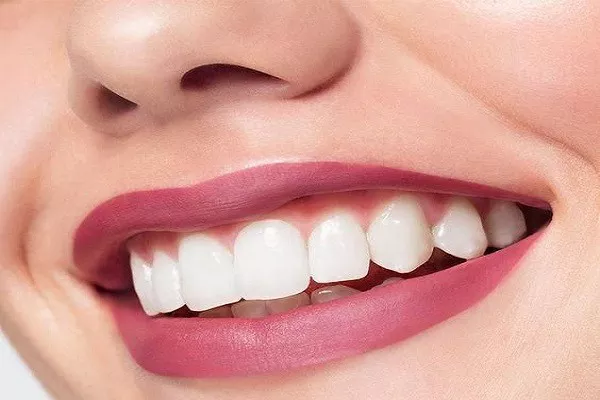Maintaining good oral hygiene is essential for overall health, and it involves regular visits to the dentist for cleaning and checkups. However, even with good brushing and flossing habits, tartar and plaque can build up over time, leading to the need for a deep cleaning procedure. While dental insurance covers many preventive and restorative procedures, it’s important to understand what dental insurance covers for deep cleaning.
In this article, we’ll explain what deep cleaning is, why it’s important, and what dental insurance covers for this procedure.
What is deep cleaning?
Deep cleaning, also known as scaling and root planing, is a dental procedure that involves the removal of tartar and plaque buildup from the teeth and gums. Unlike regular cleaning, which only focuses on the visible surfaces of the teeth, deep cleaning involves cleaning below the gum line to remove bacteria and debris that can cause gum disease.
The procedure is usually done in two parts, with one half of the mouth treated at a time. A local anesthetic is used to numb the area, and then a dental hygienist or dentist uses special tools to remove the buildup of plaque and tartar from the teeth and gums. After the procedure, the patient may experience some discomfort and sensitivity for a few days.
Why is deep cleaning important?
Gum disease, also known as periodontal disease, is a common condition that can lead to serious oral health problems if left untreated. The first stage of gum disease is gingivitis, which causes red, swollen, and bleeding gums. If left untreated, it can progress to periodontitis, which can cause tooth loss and damage to the bone and tissue that support the teeth.
Deep cleaning is an effective way to remove the buildup of bacteria and debris that can cause gum disease. By removing these harmful substances, the gums can heal and the risk of gum disease can be reduced.
What does dental insurance cover for deep cleaning?
Does dental insurance cover deep cleaning?
Yes, most dental insurance plans cover deep cleaning procedures, also known as scaling and root planing. However, the level of coverage varies depending on your plan and the severity of your dental condition.
What is scaling and root planing?
- Scaling and root planing is a deep cleaning procedure that removes plaque and tartar buildup from the teeth and gums. The procedure involves two steps: scaling and root planing.
- Scaling involves using special tools to remove plaque and tartar buildup from the teeth and gums. The dentist or hygienist will use a scaler to scrape the plaque and tartar from the teeth and below the gumline.
- Root planing involves smoothing the tooth roots to remove any rough spots that could trap bacteria and cause further gum disease. This procedure can help the gums reattach to the teeth, preventing further damage.
What dental insurance plans cover deep cleaning?
- Most dental insurance plans cover deep cleaning procedures to some extent. However, the level of coverage varies depending on your plan and the severity of your dental condition.
- Some plans may cover scaling and root planing procedures at 100% of the cost, while others may only cover a portion of the cost. It’s essential to check your dental insurance plan’s details to understand the level of coverage for deep cleaning procedures.
What factors affect the cost of deep cleaning?
The cost of deep cleaning varies depending on several factors, including:
- Severity of the dental condition: The more severe the buildup of plaque and tartar, the more extensive and costly the deep cleaning procedure will be.
- Number of teeth involved: The cost of deep cleaning depends on the number of teeth involved. If only a few teeth require scaling and root planing, the cost will be lower than if many teeth require treatment.
- Geographic location: The cost of deep cleaning may vary depending on the location of the dental practice. For example, dental services in urban areas may be more expensive than in rural areas.
How to maximize dental insurance coverage for deep cleaning?
If you’re planning to get a deep cleaning, there are a few ways to maximize your dental insurance coverage:
- Check your plan details: Before scheduling a deep cleaning procedure, check your dental insurance plan’s details to understand the level of coverage for scaling and root planing.
- Choose an in-network provider: If your dental insurance plan has a network of providers, choose an in-network provider to minimize out-of-pocket expenses.
- Discuss payment options: If your dental insurance plan doesn’t cover the full cost of deep cleaning, discuss payment options with your dentist or dental practice. Some dental practices may offer payment plans or other financing options.
- Schedule regular checkups: Preventive dental care, including regular checkups and cleanings, can help prevent the need for deep cleaning procedures in the first place.
What are the alternatives to deep cleaning?
If a patient has gum disease, deep cleaning is usually the first line of treatment. However, in some cases, there may be alternative treatments available.
One alternative to deep cleaning is laser therapy, which uses a laser to remove bacteria and debris from the teeth and gums. Another alternative is antibiotic therapy, which involves the use of antibiotics to kill the bacteria that cause gum disease.
It’s important to discuss these alternatives with your dentist to determine if they’re appropriate for your individual needs.
Conclusion
Deep cleaning is an important procedure for maintaining good oral health and preventing gum disease. While dental insurance plans vary in coverage for this procedure, most plans do cover it to some extent.
If you’re concerned about the cost of deep cleaning, it’s important to review your dental insurance plan and speak with your dentist about any alternative treatments that may be available. With proper care and maintenance, you can keep your teeth and gums healthy for a lifetime.
Related Topics:






























